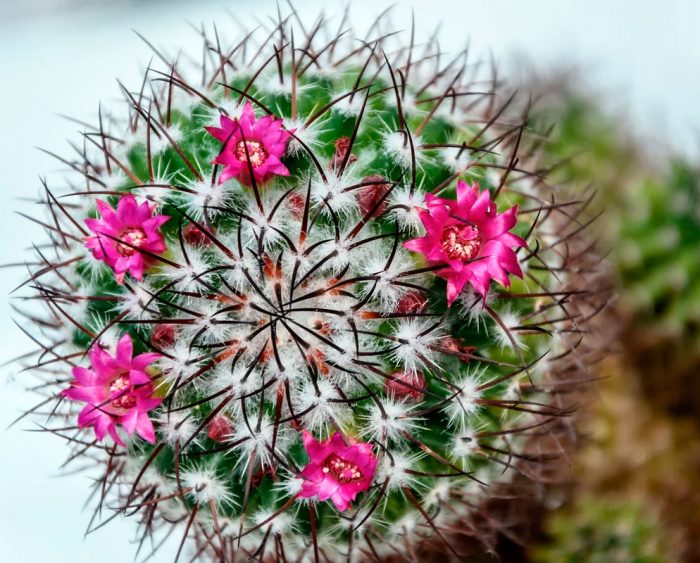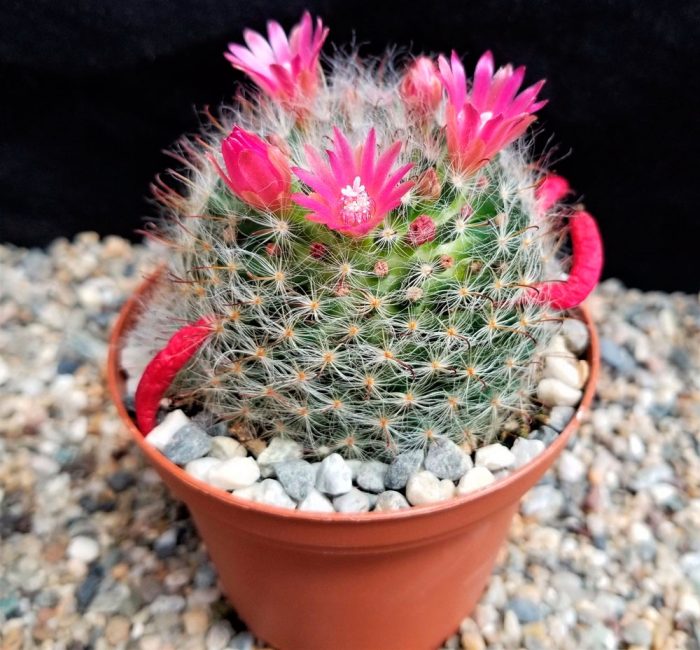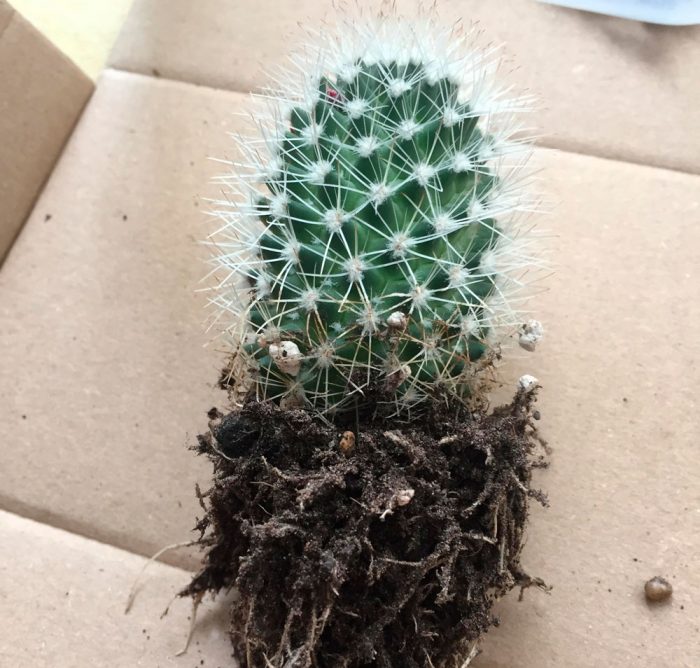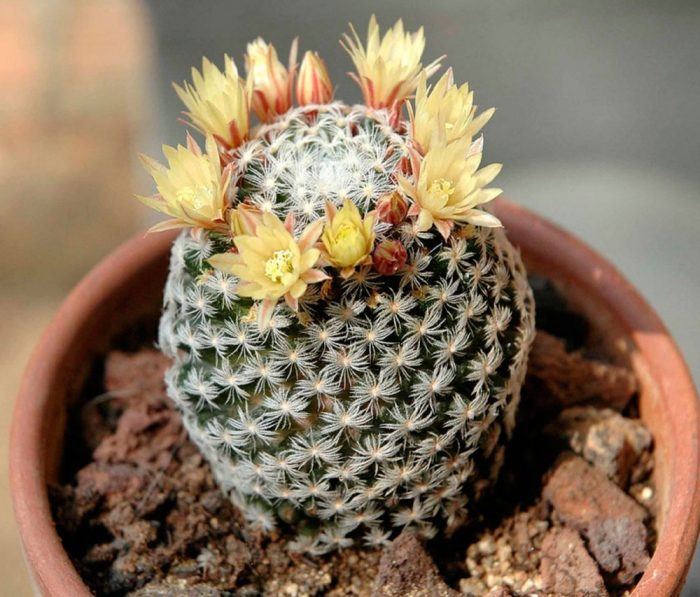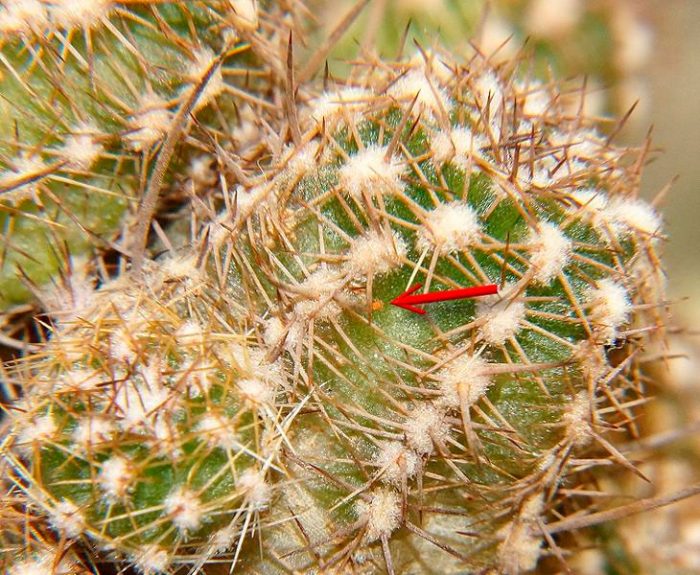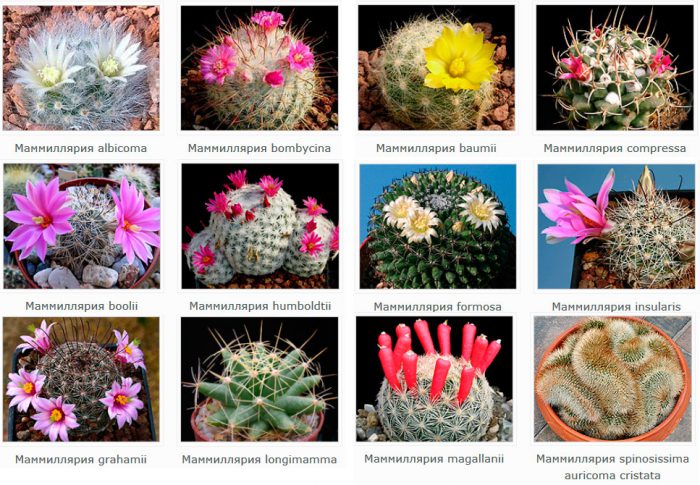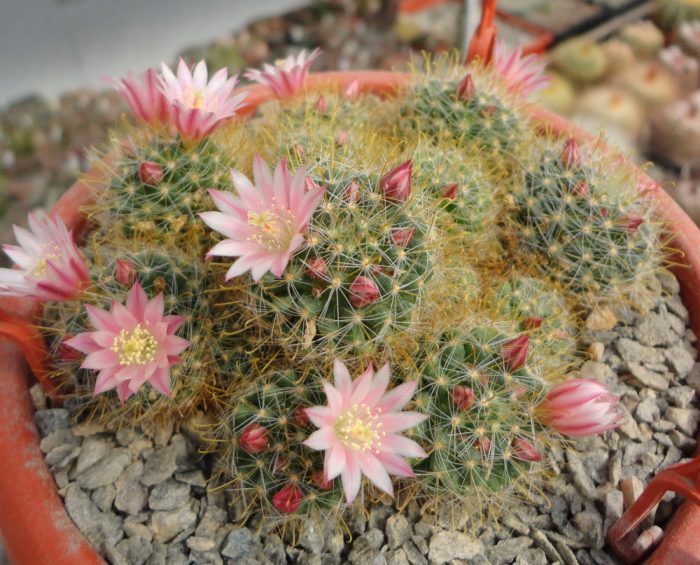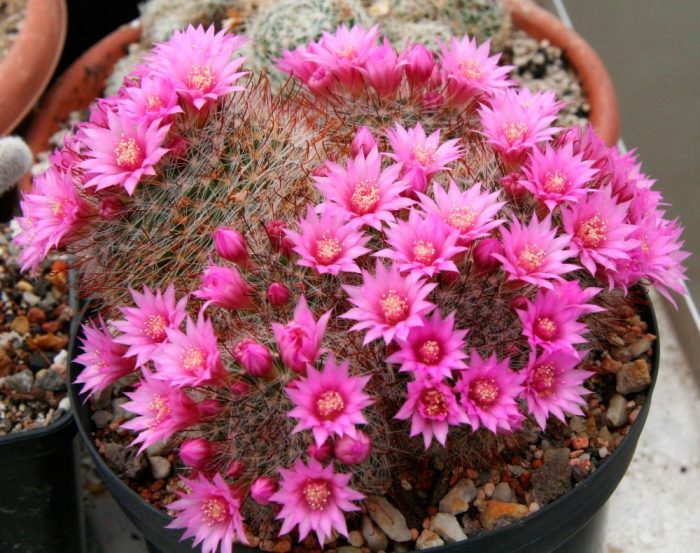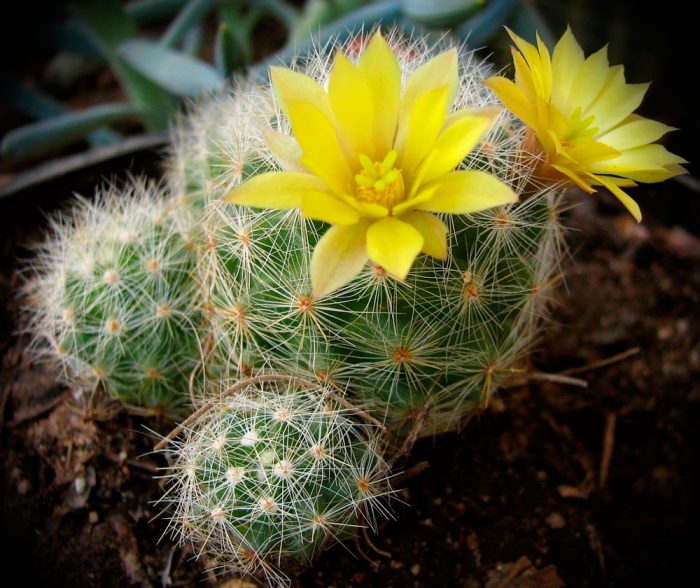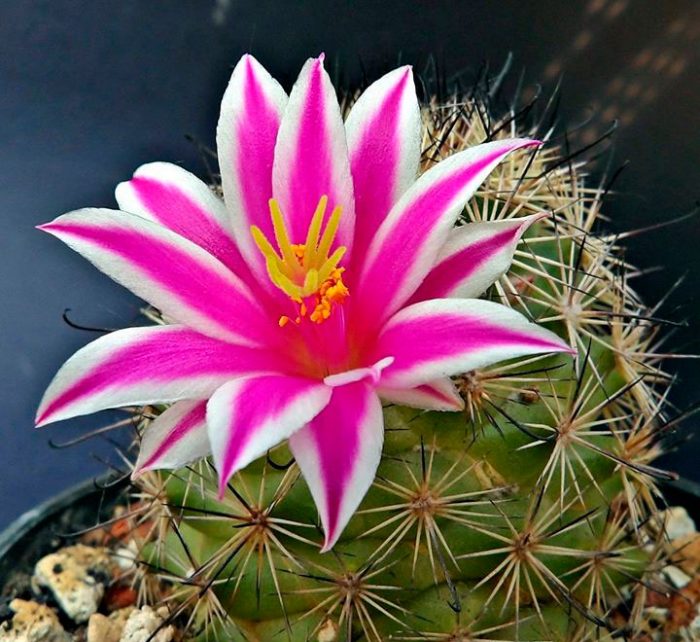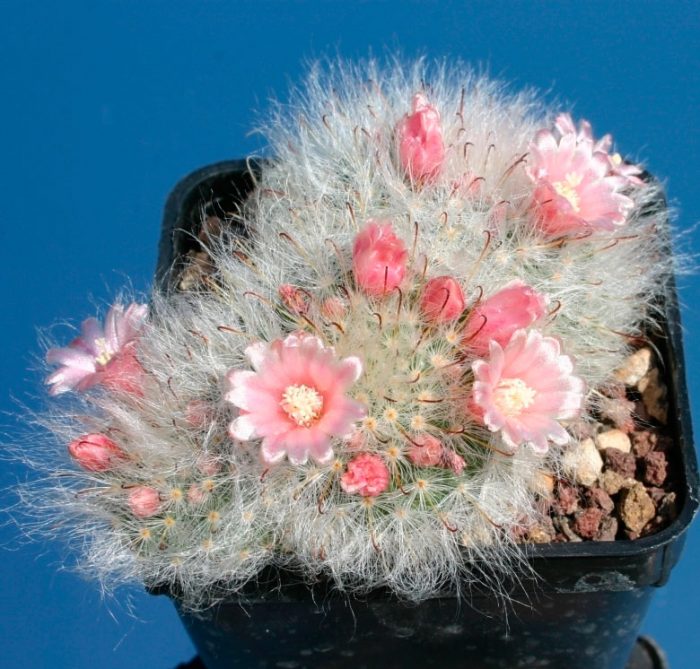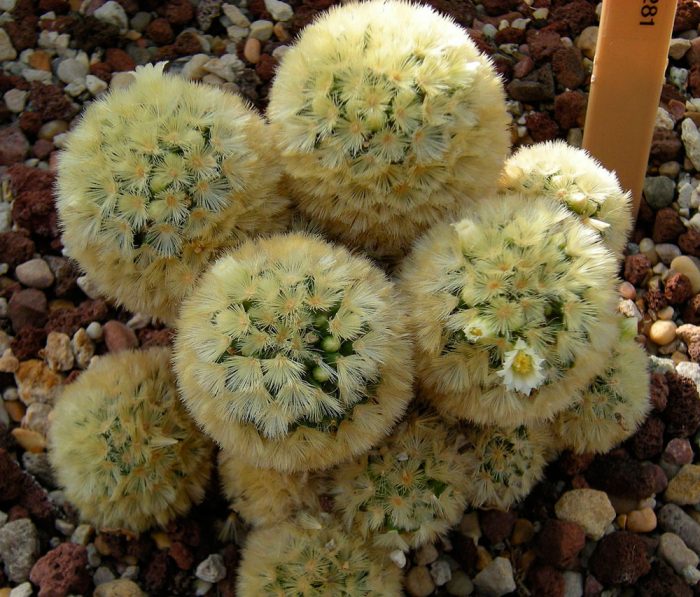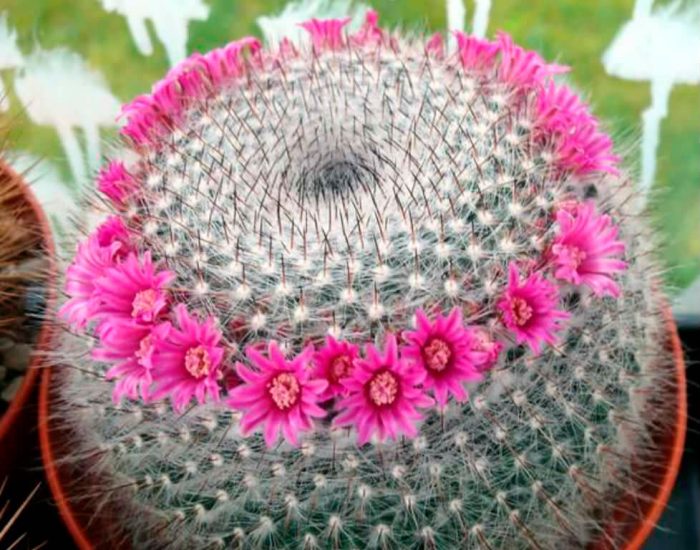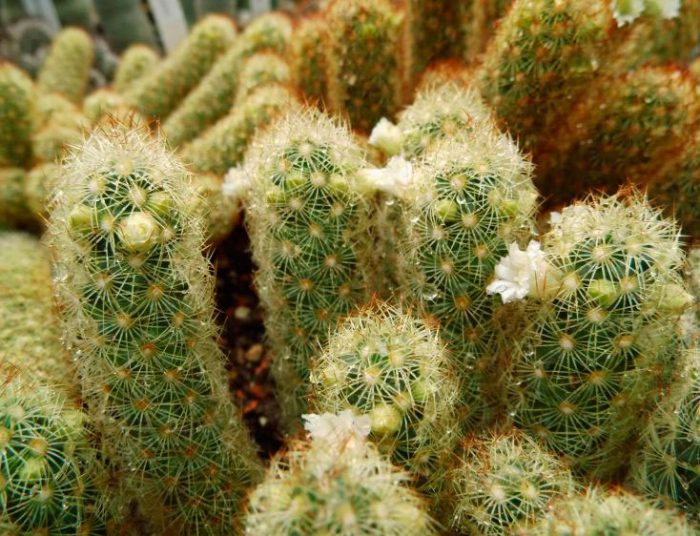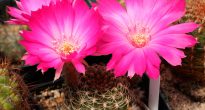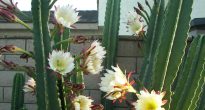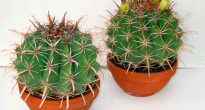One of the most popular cacti among flower growers is Mammillaria, which is distinguished by its unpretentiousness and undemanding care. These cacti come from southern North America, as well as from Mexico, and in natural conditions they prefer to grow on chalk and limestone rocks. Some species of mammillaria can be found at a very high altitude, about 2.5 thousand meters above sea level. Such cacti prefer to take root in rock crevices, in volcanic tuffs, and some species grow near the sea.
Mammillaria are not large, and their shape is most often cylindrical and round. These cacti are very pubescent. Mammillaria differs from other cacti in that on the surface of its stem there are small papillae, from which small hair-shaped spines grow. This plant is highly resistant to cold and heat. But it should be borne in mind that there are species that are extremely demanding on weather conditions.
Content
- 1 Home care for mammillaria
- 2 Types of mammillaria with photos and names
- 2.1 Mammillaria Wilda (Mammillaria wildii)
- 2.2 Mammillaria zeilmanniana
- 2.3 Mammillaria baum (Mammillaria baumii)
- 2.4 Mammillaria Blossfeld (Mammillaria blossfeldiana)
- 2.5 Mammillaria bocasana (Mammillaria bocasana)
- 2.6 Mammillaria carmen (Mammillaria carmenae)
- 2.7 Mammillaria hahniana
- 2.8 Mammillaria nivosa (Mammillaria nivosa)
- 2.9 Mammillaria prolifera (Mammillaria prolifera)
- 2.10 Mammillaria slender (Mammillaria elongata)
Home care for mammillaria
Mammillaria is a very popular cactus in culture. But in order for her to grow and develop well in indoor conditions, she needs to be provided with good care and optimal conditions for development and growth.
Illumination
This cactus is light-loving, so it needs a lot of light. If the plant does not have enough light, then it may die. Best of all, the bush will grow on the southern balcony or loggia. To make him feel normal in winter, they provide him with additional lighting, for this they install a phytolamp.
Temperature regime
In order for a cactus to develop and grow within normal limits, it needs a moderate air temperature, or rather, from 15 to 25 degrees. In summer, on hot days, he will need protection from direct sunlight, as they can harm him. If the bush overheats, it will become wrinkled or burns will appear on it. The plant is shaded only when it is in a dry and unventilated place. If the window is constantly open, then the bush does not need to be shaded.
Dormant period
In winter, the mammillaria has a dormant period. Best of all, during this period, it is cool (from 7 to 10 degrees). During the dormant period, watering must be suspended. Those cacti, on the stems of which there is pubescence, in winter should be at a temperature of at least 15 degrees. If such bushes grow in a warmer place, they may suffer.
Watering
Mammillaria is watered differently in winter and summer. During the dormant period, the bush needs to be watered very sparsely and rarely, so, on average, the procedure is carried out 1 time in 15-20 days. In spring and summer, the number and abundance of irrigation increases. In the warm season, on average, the soil mixture is moistened once every 7 days, however, the final irrigation frequency is influenced by weather conditions and the size of the capacity. But it is imperative to remember that you should moisten the potting soil only when it is completely dry. Otherwise, you can harm the plant. It is best to water the Mammillaria in the morning, in this case, the surface of the soil mixture in the pot will be able to dry thoroughly until the evening.
Particular attention should be paid to watering the cactus in autumn and winter. Indeed, it is in the cold season that it is very susceptible to waterlogging of the substrate, although in the spring-summer period it is impossible to allow stagnation of moisture in the root system.
Top dressing
This plant is fed exclusively with specialized fertilizers for succulents and cacti. Moreover, they choose only liquid fertilizers. Mammillaria is not fed all year round, but in April – October. In winter, when a dormant period is observed, all feeding is stopped.
Mammillaria transplant
While the mammillaria is young, it is transplanted regularly once a year. And when the plant becomes adult, the number of transplants must be reduced to one in 2 years.
Such plants need a porous substrate that allows water and air to pass through well. It is imperative to add a small amount of gravel and brick chips to the finished soil mixture. Humus cannot be poured into the substrate, because it is not recommended to grow cacti in a soil mixture that contains too many nutrients.
Bloom
When growing a cactus indoors, it blooms regularly and quite effectively. As a rule, the formation of the first buds occurs at the end of the dormant period. Ripening buds on the bush can be found already in January. In this case, from April, the flower begins to be watered more abundantly, while the first flowers should already open around March.
The development of buds on mammillaria lasts about four weeks, it is because of this that during this period watering should be more abundant and frequent, but balanced. Remember that during the ripening of the buds, the bush should stand on the windowsill in such a way that direct sunlight does not fall on the side of it, on which flowers will open after a while. The side on which the bud is located is turned so that it is in the shade. If this is not done, then the bud may die.
Reproduction
Many flower growers use shoots to propagate mammillaria, because this method is distinguished by its simplicity and ease. However, experts advise that once every few years such a cactus should be grown not from the stem, but from the seed. The fact is that the shoots of this plant can degenerate over time.


Watch this video on YouTube
Diseases and pests
When growing mammillaria in room conditions, the following problems may arise with it:
- Settled on a bush red spider mite... This pest can cause severe harm to the cactus, so you need to start fighting it immediately after it is detected. In order to get rid of a tick, as a rule, special insecticidal preparations are used.They need to spray the bush for 15 days in accordance with the instructions, which can be found on the package.
- Cactus appeared on the plant scabbards... It is quite difficult to get rid of scale insects, because adults have a protective shell. That is why, in the fight against such a pest, one cannot do without pesticides, or rather, insecticides. Treatments with such a drug are carried out regularly in accordance with the instructions for several weeks until all the insects die.
- The appearance of a bush in the root system nematode... The matter is complicated by the fact that nematodes are located underground on the roots, so it is not so easy to detect them. In most cases, bubbles form on the surface of the roots in the affected bush. To save a cactus, remove it from the substrate and trim off any bubbles. Then immerse the root system in very warm water (about 50 degrees) for 10 minutes. Next, sprinkle the roots with charcoal powder, and plant the bush in a new pot and fresh, disinfected substrate.
- The color of the trunk has changed or it has become soft... In most cases, this is due to the appearance of rot on the bush. Dry the potting soil well and adjust the watering.
As a rule, harmful insects settle on a cactus due to a poor quality soil mixture.
Types of mammillaria with photos and names
Mammillaria Wilda (Mammillaria wildii)
This species has a long and thick stem. Most often, the stem reaches about 50 millimeters in diameter. In such a plant, the papillae are elongated and thin, and golden spines grow on them. A distinctive feature of this species is that it has a central crochet thorn. It also has very strong branching. During flowering, white rather large flowers appear on the bush. After pollination, berries are formed on this cactus.
Mammillaria zeilmanniana
This type is most popular among florists. The not very large short stem of this cactus is colored dark green, and its shape is cylindrical. In this species, many shoots are formed on the side of the flower. Flowering lasts quite a long time, or rather, about 6 months. During the flowering period, flowers of a deep pink color are formed on the bush. Pay particular attention to watering this species. The fact is that its stem has a soft structure, and therefore abundant and frequent watering is contraindicated for it. If properly cared for, this plant will be very resistant to adverse weather conditions. He is not afraid of lowering the air temperature to minus 7 degrees.
Mammillaria baum (Mammillaria baumii)
This species differs from the rest in that it grows very actively. On the surface of the greenish stems there are a huge number of white thorns. As the plant grows, a bush is formed, which can reach a width of about 15 cm. Flowering does not differ in its duration, but it is quite spectacular. Large yellow flowers with a very pleasant smell are formed on the bush. After flowering, large gray fruits are formed on the cactus.
Mammillaria Blossfeld (Mammillaria blossfeldiana)
Unlike other species, this cactus has a very unusual spherical stem. Its surface is covered with many yellowish spines. When grown at home, this cactus blooms regularly. It produces large beautiful flowers, the petals of which are painted in a pink tint, while the core is dark. This species, like the others, is resistant to both heat and cold. If the bush is provided with good and proper care, then even sudden changes in temperature will not harm it.
Mammillaria bocasana (Mammillaria bocasana)
The short stem of this cactus is only about 60 millimeters long. Hard, hook-shaped spines surround thin and soft hairs, which are collected in bunches.During flowering, small creamy or white flowers form on the bush. This species is quite resistant to adverse weather conditions. If you take care of the plant correctly, even a slight drop in temperature will not harm it.
Mammillaria carmen (Mammillaria carmenae)
This species is one of the most popular, and it grows well in indoor conditions. A not very large stem reaches about 50 millimeters in height. It has an unusual spherical shape, and its surface is covered with brown or white hairs. In width, an adult bush reaches about 15 cm. During flowering, pink or white flowers are formed on the plant. This species is highly resistant to unfavorable weather conditions, and if you take care of it correctly, then even not very large frosts will not harm it.
Mammillaria hahniana
The bush of this species is small. Its stem shape is similar to a ball. This species forms several not very large groups, which reach about 10 cm in height and in diameter. The stem of this plant has a dense pubescence, which consists of white spines. During flowering, spectacular red flowers are formed on the bush. This cactus is distinguished by its unpretentiousness to temperature.
Mammillaria nivosa (Mammillaria nivosa)
This species got its name due to the fact that there are white hairs between the papillae. It differs from other species in that it contains milky juice. It can be found simply by breaking the papilla or stem. This species has 6–13 radial spines and 6–13 brownish or yellow spines. During flowering, yellow flowers appear on the bush, the length of which reaches 20 mm. This species is distinguished by its unpretentiousness to temperature. If you take good care of him and properly, he will not be afraid of both heat and cold.
Mammillaria prolifera (Mammillaria prolifera)
This succulent plant grows quite well in indoor conditions. The length of the bush in this species can reach about 50 mm, and in diameter - up to 30 mm. On the surface of the rounded stem, there are small tubercles, as well as many white thorns, which makes the bush look "hairy". Flowering is observed in winter and spring, and it lasts from December to May. Bell-shaped flowers reach about 20 mm in diameter, and they can be painted in white or cream shade. This plant is not afraid of both heat and cold. But best of all in indoor conditions, this cactus grows and develops at a temperature of 10-15 degrees.
Mammillaria slender (Mammillaria elongata)
This species grows and develops very well in indoor conditions. Its stem reaches about 20 millimeters across, and its length can reach 20 centimeters. In this species, the stem is elongated and soft, with small tubercles on its surface. There are also golden spines on the stem, which are collected in not very large rosettes. This species blooms from April to June, at which time yellow or white flowers appear on the plant. It is recommended to grow this species in a cool place (10-15 degrees).
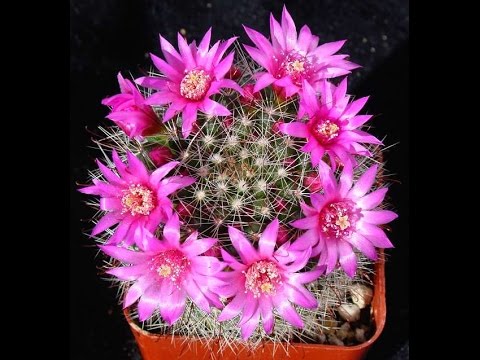

Watch this video on YouTube

